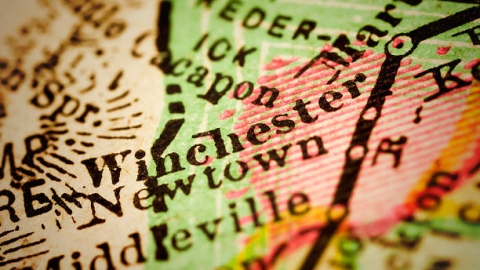Leveraging Drone Flight Services for Your City
The city of Winchester, VA has an impressive Geographic Information Systems (GIS) department, which is devoted to collecting and sharing different types of geographic data about the city.
On the city’s GIS webpage you can find a variety of maps, including a zoning map, a tax map, and a floodplain map. You can also access raw GIS map data on the city’s Open Data Portal.
But there’s a problem—the data is constantly becoming outdated because the city is rapidly growing and developing.
The department conducts a comprehensive update of the city’s maps twice a year, and it also conducts tactical city mapping and surveying throughout the year to make sure they’re kept up to date.
A manned aerial vehicle service provider has historically performed the aerial data collection and processing for these maps. But this approach is costly, and the need for tactical survey flights continues to grow alongside the city’s growth.
Using Drones to Map the City of Winchester
Winchester’s GIS Coordinator is Kyle Schwizer. Schwizer was a key figure in Winchester’s work with DroneUp as its first partner in the Innovative Municipalities Project. He helped organize many of the tests that DroneUp performed for the city.
This drone mapping initiative became the fourth of five tests undertaken as part of DroneUp’s Innovative Municipalities Project in Winchester. (The first three tests were covered over the last three weeks, and the remaining test will be covered next week.)
Results from the Drone Mapping Test
To conduct the mapping test, the DroneUp team used an Inspire 2 with Ground Control Points in a defined sample area—a local park named Jim Barrett Park.
The park spanned 178 acres and presented an ideal location for the test. If the drone could map the park, it could hypothetically be used both for tactical surveys and for the more extensive comprehensive surveys that the city does biannually.
The mapping test was planned for a Thursday in September. The DroneUp team decided to fly two different flight paths to collect high-resolution visual imagery that could be processed into a map of the park.
That morning, DroneUp team members placed DroneUp’s Propeller Aeropoints along the two planned flight paths. Aeropoints are Ground Control Point (GCP) equipment made for drone mapping, which allows pilots to collect locational data that can be used to create accurate 3D models.
The DroneUp pilot conducted both flights at the height of 250 feet in the air, with a 75/65 overlap. Using local knowledge of the park’s land and air ecosystem provided by the GIS department and DroneUp’s UAV expertise, the team performed the survey in full compliance with the FAA’s Part 107 rules for commercial drone operations.
So what were the results?
The team successfully demonstrated the ability to perform tactical surveys, proving that they could be used to keep the city’s maps up-to-date.
An additional discovery from the test was that the drone could collect mapping data even more quickly than anticipated. During the test, the pilot experimented with flying at speeds of up to 34 miles per hour and found that the speed did not impact the quality of the data collected.
Because of the faster speed, flying time was reduced from two hours to just one, presenting a compelling use case for future updates to city maps. Across industries, DroneUp has found ways to use drones to speed up processes and reduce downtimes—and these faster speeds can mean significant savings, regardless of the type of operation.
What’s Next?
The city has proved that a drone can be used for tactical surveys, and the next step is to create a regular, repeatable program for collecting and processing mapping data by drone.
The good news is that commercial construction companies have already paved the way with their work to do recurring site progress monitoring by drone. That work has the potential to provide a model for how Winchester can regularly conduct tactical surveys by drone and incorporate that data into the city’s existing GIS systems.
An additional discovery made during the mapping test was the need for tactical surveys following severe weather.
On the day of the mapping test, Jim Barrett Park was muddy and wet due to heavy rains that had occurred the previous day (these rains made that day’s test focused on using drones to measure energy loss impossible).
While the DroneUp team was flying in the park, a crew from the Parks and Rec department approached to learn about what they were doing. When they heard that the park was being mapped by drone, they commented that it would be incredibly useful for them to get quick aerial data showing the conditions of different parts of the city’s parks after heavy rains.
They also observed that having up-to-date, high resolution maps of the city’s parks would be useful for decision making and planning when trying to do property damage assessments following severe weather.
About DroneUp’s Innovative Municipalities Project
The Innovative Municipalities Project is an initiative created by DroneUp to offer drone flight services to cities to help them become more efficient while realizing significant savings.
The project’s core focus is to test how drones can help cities improve their work from one day to the next by leveraging drone technology.
Through close collaborations between DroneUp and city governments, project leaders identify and test custom-built solutions for each city’s unique need to employ advanced drones and software to help cities save money, improve efficiency, and, in some instances, keep people out of harm’s way.
Learn more about DroneUp’s Innovative Municipalities Project.
